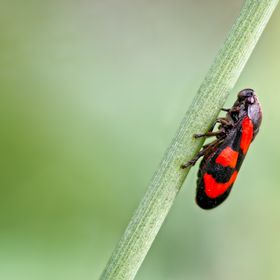

Badgrandad
FollowAnother image from our back garden. The breeze died down enough for me to get a reasonable shot, thankfully.
Another image from our back garden. The breeze died down enough for me to get a reasonable shot, thankfully.
Read less
Read less
Views
2701
Likes
Awards
Staff Winter Selection 2015
Peer Award
Superb Composition
Absolute Masterpiece
Top Choice
Superior Skill
Magnificent Capture
Outstanding Creativity
All Star
Genius
Love it
Virtuoso
Top Ranks
Categories
Same photographer See allBehind The Lens
Discover more photos See all
Behind The Lens
Location
This image was taken in my rear garden, with the fly sitting on a grass inflorescence.Time
This was taken on August the 13th last year at about 19.10 hours on a very still calm evening.Lighting
It was early evening so the sun was low and catching the grasses just right to illuminate them with a great warm light striking at about 30 degrees or two a-clock if using the clock position. This gave a little cross lighting to help emphasise the details.Equipment
I used a tripod, remote cable and Pentax K3 with my sigma 70mm macro lens attached. I do not use flash at all currently. The camera settings were less than adequate, but it was calm, the settings were: 1/30 sec, f10, +1ev, Av priority spot metered, ISO 250.Inspiration
I have always been interested in nature and after taking up photography it was a natural progression to combine both interests. In particular, the micro world of insects and the smaller details in life that are not readily observable are suddenly revealed through the macro lens. Sometimes after taking my images or while waiting to take some more I would just wait and observe their behaviour and finer details. On this occasion I had been photographing moths from the previous nights moth trap collection, before releasing them. I had my tripod out, the night was still and I saw these flies resting on the grass (which I had observed before on previous evenings), illuminated by the low suns rays, so it was a simple case of carefully approaching to try my luck.Editing
I tend to have a routine of re-calibrating for the camera/lens combo either in LR or DXO before proceeding with tweaking the exposure and setting white and black points in LR. Then on this occasion I applied a slightly cooler temperature then softened the background using negative clarity and contrast and exported to PS where I typically use Nik filters in the order, Define, raw pre-sharpen, viveza and colour effects before applying any other tweaks in PS before sharpening using the High Pass filter. Basically I was reducing the clarity and temp of the background and increasing the clarity and temp of the subject to give good separation and sense of depth to the main subject.In my camera bag
Today it is the Pentax K3 camera, my new baby which replaced my old baby the Samsung GX10. My favourite lens is the Sigma 70mm f2.8 macro lens. But I also enjoy landscape and nature in general so I have the Pentax 12-24, 16-50 and 50-135 mm lenses to cover the bases as far as my pocket will allow. All of these are suitable for Landscape and pictorial work. I tend to swap between handheld and my Gitzo monopod for macro work and occasionally use the tripod at home for moth images. I also have 3 polarisers to cover the lenses above and use a cable release for tripod work with a an Induro ball head for the tripod and a Gitzo ball head for the monopod which I have now substituted for a hydrostatic manfrotto ball head with quick release plates. This way I can take my camera of the monopod and easily attach it to my black rapid strap and vice versa.Feedback
For macro work, you have to have patience and do not rush i.e. insects respond to sudden movements and shadows. Therefore figure out your approach and move very slowly into position and be prepared for the quarry to not wait for you, I'm afraid that happens all to often and easily. Watch out for the background and any conflicting material that may compete with your subject to keep things as simple as possible, which is not always possible so at least take a record shot which is a good thing to do anyway as you approach from distance. Try to compose with the subject looking into the frame unless there is another suitable composition (artistic licence and personal choice here usually learnt through trial and error), focus on the eyes and try to get on the same level as the subject. Focusing is critical as there is only a very narrow depth of field available for macro photography and unlike conventional lenses the dof projects in front and behind by 50% as opposed to 70/30%. The closer you get the more restricted the light available, which may slow your shutter speed. As you are effectively magnifying your subject then you are also magnifying and imperfections in your technique such as vibration and movement, therefore it is necessary to have a high enough shutter speed to compensate for these problems, which can be achieved by widening the aperture or increasing the ISO or both. Lastly do not expect to get a great shot every time and enjoy the experience and the challenge which can be aided by learning about your subject and improving your field craft.


















































![A small praying mantis [Ameles spec.] in the early morning. No image manipulation - retouching. by HenrikSpranz](https://cdnpt01.viewbug.com/media/mediafiles/2020/12/24/92124496_widepreview400.webp)










